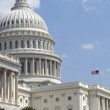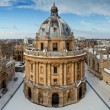The Library of Parliament is the main information repository and research resource for the Parliament of Canada. In the history of knowledge management, bodies of government have always needed to amass large and specialized libraries to do the work of government.
Knowledge Institutions
Since the earliest days of civilization, whether through the spoken word or the written, the actions of our leadesr, teachers, scientists, artists, and citizens have formed our modern world. Much of the knowledge and know-how of the ages is formalized and preserved in the universities, libraries, legislatures, governmental buildings, laboratories, theaters, artists studios, and workplaces of our societies.
This Series of images portrays some of those knowledge creating and holding institutions.
Palace of Westminster and Big Ben, London
Palace of Westminster, Westminster Bridge and Big Ben, London, England. The Palace of Westminster, is the meeting place of the two houses of the Parliament of the United Kingdom—the House of Lords and the House of Commons. It lies on the north bank of the River Thames in the heart of London.
Ceiling, Library of Congress, Washington DC
Library of Congress building, Main Reading Room Ceiling, Thomas Jefferson Building, Washington DC. The oldest of the three United States Library of Congress buildings, the Thomas Jefferson Building was built between 1890 and 1897. It is known for its classic facade and elaborately decorated interior. The Library of Congress Building as it was at first known, is located on First Street SE, between Independence Avenue and East Capitol Street in Washington, DC.
Library of Congress, Washington DC
The Library of Congress is the central repository for the knowledge-base of the U.S. government. The Library’s mission is to support the Congress in fulfilling its constitutional duties and to further the progress of knowledge and creativity for the benefit of the American people.
United States Capitol, Washington DC
The American Capitol Building is the meeting place of the U.S. Congress. Built in 1793, its neoclassical style has characterized many U.S. government buildings. Prior to establishing the nation’s capital in Washington, D.C., the United States Congress and its predecessors had met in Philadelphia, New York City, and a number of other locations.
Library at Strahov Monastery, Prague, Czech Republic
The theological hall of baroque library at Strahov Monastery, Prague, Czech Republic. Before the rise of the modern university, monasteries held much of the knowledge in the Western world. In 1670 Jeroným Hirnheim, a philosopher and theologist became the abbot of Strahov. His greatest work, which has survived to the present days, was the building of the new library, the present Theological Hall completed in 1679.
Low Memorial Library at Columbia University, New York City
The libraries of large universities hold substantial amounts of the world’s knowledge-base. This image shows one of 22 libraries in the Columbia University system. Low Memorial Library was completed in 1897 and served as the main library until 1934. Today this landmark building functions as the administrative center of the University and houses the offices of the President and the Provost.
Central University Library of Bucharest
The Central University Library of Bucharest is a library in central Bucharest, located across the street from the National Museum of Art of Romania. During the Romanian Revolution of 1989, a fire was started in the building and over 500,000 books, along with 3,700 manuscripts, were burnt.
The Radcliffe Camera and All Souls College in Radcliffe Square, UK
A panoramic view of Radcliffe Camera and All Souls College in Radcliffe Square, Oxford, UK. Founded in the 11th century, Oxford University is the second oldest university in the English-speaking world.
The Reichstag Building, Berlin
The Reichstag building is a historical edifice in Berlin, Germany, constructed to house the Reichstag, parliament of the German Empire. It was opened in 1894 and housed the Reichstag until 1933, when it was severely damaged in a fire. In 1990, it underwent reconstruction led by internationally renowned architect Norman Foster. After its completion in 1999, it became the meeting place of the modern German parliament, the Bundestag.











 As the knowledge-based economy expands, the companies and individuals that possess intangible intellectual assets, such as intellectual property, will need specialized expertise, strategic thinking, legal experience, and the wisdom necessary to manage intellectual assets.
As the knowledge-based economy expands, the companies and individuals that possess intangible intellectual assets, such as intellectual property, will need specialized expertise, strategic thinking, legal experience, and the wisdom necessary to manage intellectual assets.